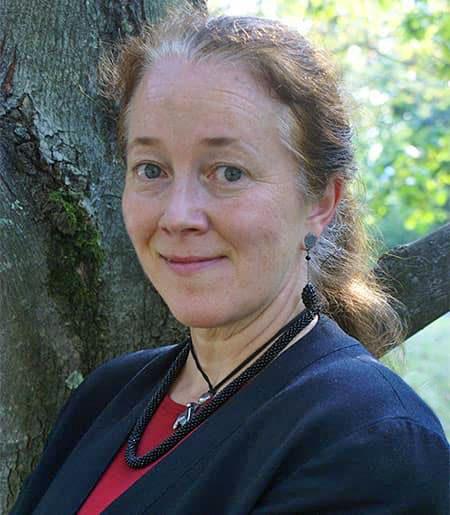Overview
Kaja M. McGowan’s areas of interest involve South and Southeast Asia with emphasis on Indonesia, particularly Java and Bali (both historically Indic in orientation) studied in relation to the subcontinent. Rather than see India and Indonesia, for example, as modes of influence between two points, her scholarly interests encourage studying the reciprocal relationships between neighboring countries in Southeast Asia. Her research explores the flow of ideas and artifacts along this highway -- architecture, bronzes, textiles, ceramics, performance traditions, and visualizations of texts like Panji Malat, the Ramayana, and the Mahabharata -- artifacts that move and those that are locally produced. This accounts for the shaping of ideas and the development of styles across vast geographical and historical distances. Her work is governed by the complex ways in which History of Art and Visual Studies intersect with Anthropology, Material Culture, Colonial and Post-colonial Theory, Performance, Gender, and Religious Studies.
Her current book project Fertile Currencies traces the commonalities and divergences between the discipline of the history of art of Southeast Asia and contemporary interdisciplinary material culture studies to explore why the two have been so poorly integrated. Borrowing Paradise, published by Pegasus Press (2023) is part of that materially driven endeavor, exploring collaboratively the interstices of art history, religion, and the political ecology of birds-of-paradise (Paradisaea Apoda). This book centers around the Balinese custom of “borrowing” a stuffed greater-bird-of-paradise from the royal palace or a high priest’s house for cremation ceremonies. Greater-birds-of-paradise are a protected species that may only be hunted by the Aruese for ritual purposes. Exactly when this exchange between Bali and the Aru Islands began is still a mystery, but presumably it has been going on for centuries. “Re-using” one stuffed bird of paradise to assist the souls of an entire village over time argues for a more ecologically sustainable approach to preserving nature.
Research Focus
- South and Southeast Asia with an emphasis on Indonesia
- Colonialism as cultural process
- Landscape and the human body
- Gender studies
- Visual reception and its global/local interface
- Performance
- Material culture.
Publications
“The Protective Power of ‘Wearing Letters’ and ‘Attiring Texts’ in 18th Century Bali,” Journal of Southeast Asian Studies, Cambridge University Press (March 2022).
Borrowing Paradise: The History of Ritualized Taxidermy in Bali, Indonesia (Pegasus Press, 2023).
"Hindu Forms/ Material Returns: Advocating for a Water Centered Approach," in Performing Prowess: Essays on Localized Hindu Elements in Southeast Asian Art from Past to Present, edited by Wannasarn Noonsuk as both an Open-Access and printed and peer-reviewed book (Thammasat University Press, 2023).
“Architects in the Eye of the Storm,” in Southeast of Now: Directions in Contemporary and Modern Art in Asia, Vol. 4, Issue One, NUS Press, Singapore (April 2020).
“Unfolding the Foreign: Mining for Sacred Maa’ in Torajan Local Texts,” in Traded Treasure: Indian Textiles for Global Markets, edited by Ellen Avril. Published by Herbert F. Johnson Museum of Art in connection with an exhibition by the same name (2019), and a related conference. March 2019, pp. 18-31.
“Journey from Father to Son: A Meditative Journey to ‘Bead Mound’ and Back” in Peninsular Siam and its Neighborhoods: Essays in Memory of Dr. Preecha Noonsuk. Edited by Wannasarn Noonsuk (Cultural Council of Nakhon Si Thammarat, Time Printing, 2017) pp. 171-180.
“Mengabaikan Hutan untuk Pohonnya” in Lempad of Bali (Edisi Bahasa Indonesia) a volume commissioned by Museum Puri Lukisan to document the life and work of Pita Maha painter and architect, I Gusti Nyoman Lempad [1862-1978] Edited by Wayan Kun Adnyana and Translated into Indonesian by Ni Luh Windiari, Verra Mulianingsih dan Aryadi Jaya (Yayasan Titian Bali, 2016) pp. 32-60.
“Forsaking the Forest for the Trees,” in Lempad of Bali: The Illuminating Line, a volume commissioned by Museum Puri Lukisan to document the life and work of Pita Maha painter and architect, I Gusti Nyoman Lempad [1862-1978] Singapore: Editions Didier Millet, 2014.
“With ‘the rising sun (hinomaru) on their back’: Exploring Batik Djawa Hokokai and the Japanese in Indonesia,” in Trans-national Southeast Asia: Paradigms, Histories, Vectors, Kyoto University’s Center for Southeast Asian Studies, 2013 (pp. 51-66).
“Sifting Mountains and Rivers Through a Woven Lens: Repositioning Women and the Gaze in Fourteenth Century East Java,” in Wiley-Blackwell Companions to Art History: A Companion to Asian Art and Architecture (eds.) Rebecca M. Brown and Deborah S. Hutton (Blackwell, 2011) pp. 486-512.
Ida Bagus Made: The Art of Devotion, a volume honoring the Fiftieth Anniversary of the Puri Lukisan Museum, Bali, Indonesia (Yayasan Ratna Wartha, 2008).
“Love, Death and Shifting Patronage in Bali during the 1930s: Two Spatial Models Meet ‘Face to Face’ on Sacred Threads of Sound” in Asian Art in the Twenty-First Century (Clark Studies in the Visual Arts) ed. Vishaka Desai (Yale University Press, 2007) pp. 96-122.
“Raw Ingredients and Deposit Boxes in Balinese Sanctuaries: A Congruence of Obsessions,” in What’s the Use of Art?: Asian Visual and Material Culture in Context (eds.) Morgan Pitelka and Jan Mrasek (University of Hawaii Press, 2007) pp. 238-271.
“Chasing Sita on a Global/Local Interface," in The Ramayana Revisited: Gender, Performance, Iconography and Narrative Design. (ed.) Mandakranta Bose (Oxford University Press, 2004).
